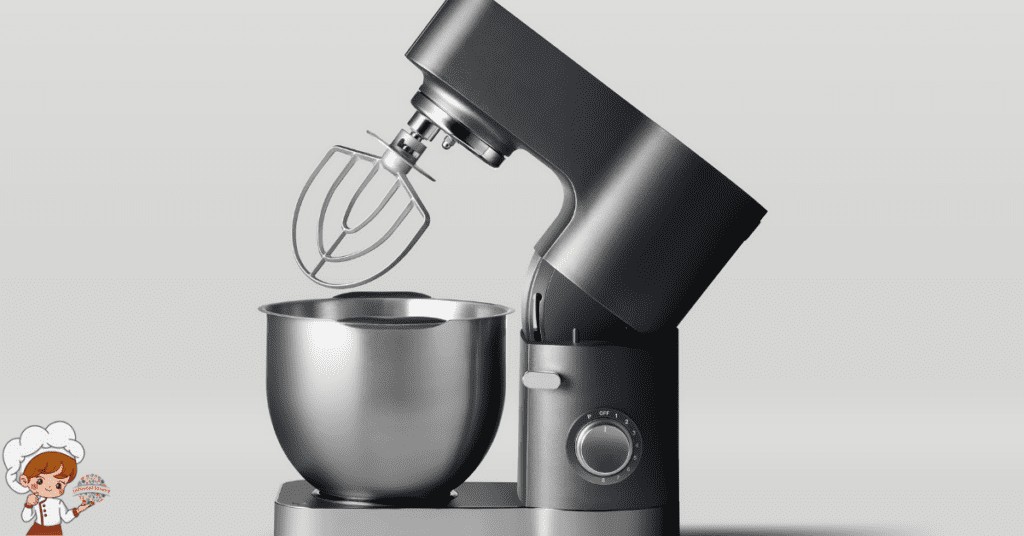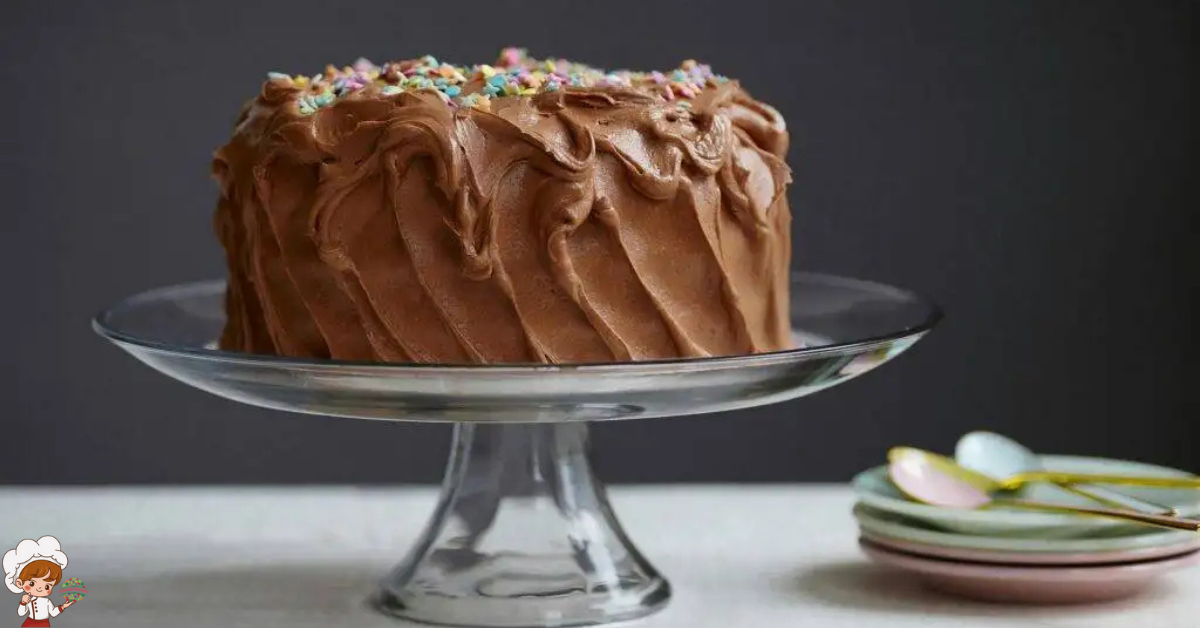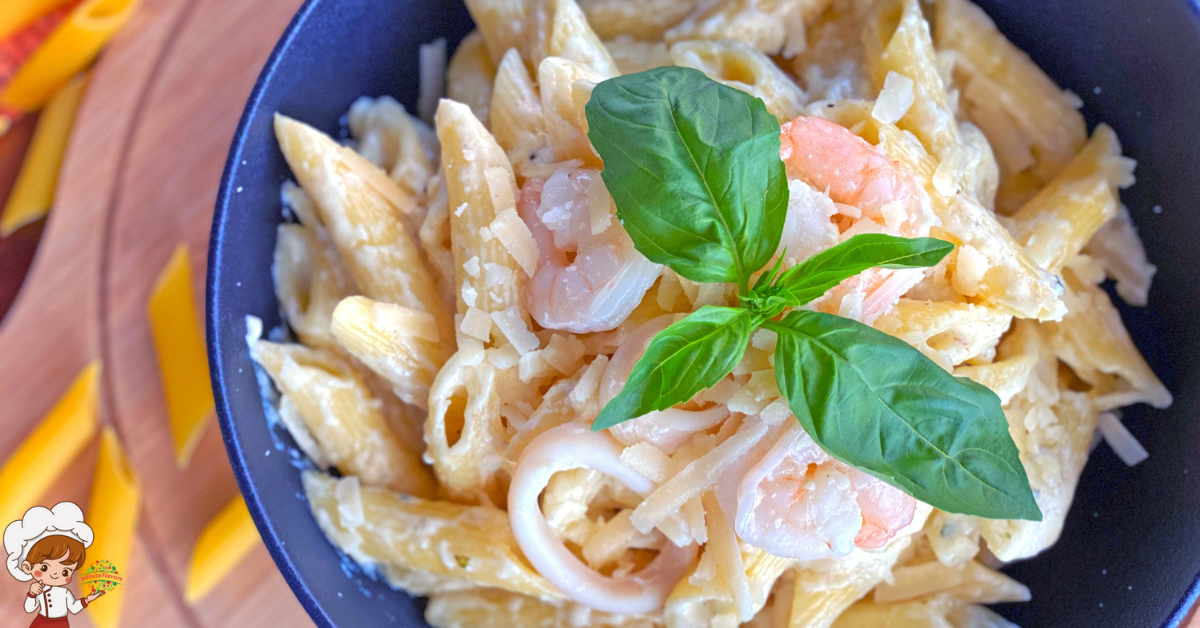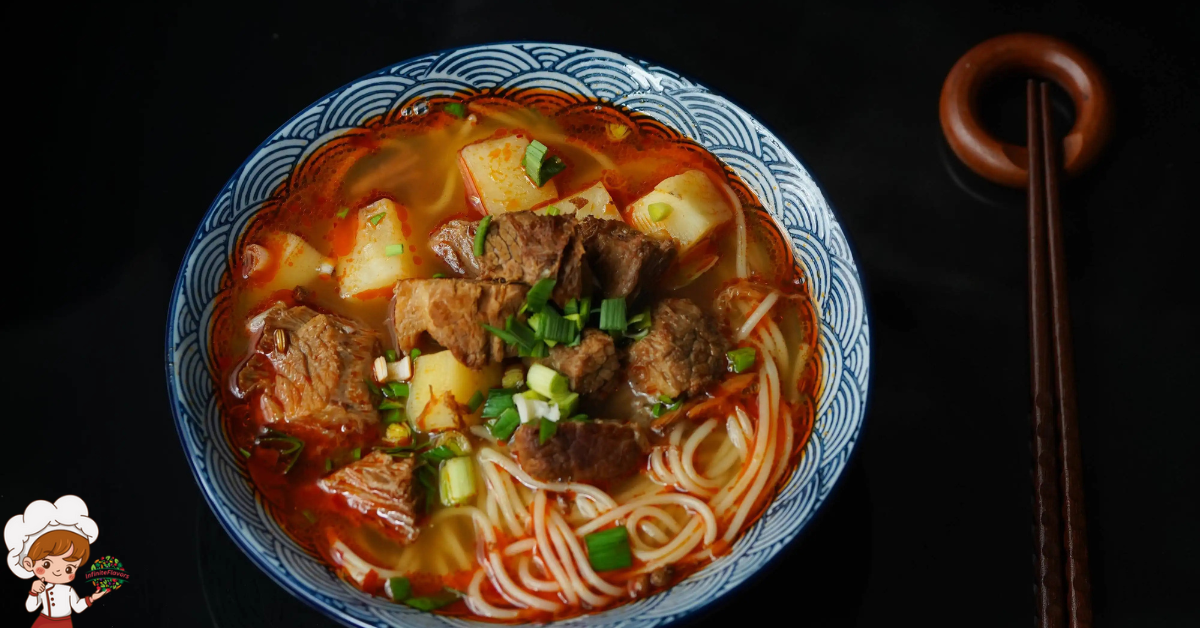The Best Stand Mixers For Heavy Dough Mixing

The Best Stand Mixers For Heavy Dough Mixing; If you’re mixing heavy dough, a powerful stand mixer is a game-changer. Look for a model with at least 500 watts of motor power and a bowl capacity of 5 to 7 quarts to handle larger batches efficiently. A sturdy dough hook is essential for properly kneading dense mixtures, while additional attachments can enhance your baking versatility. Popular brands like KitchenAid and Bosch are known for their performance and durability. Investing in a high-quality mixer makes baking easier and more enjoyable, proving invaluable in your kitchen adventures. There’s so much more to reflect on about choosing the right stand mixer!
Importance of Stand Mixers
Stand mixers are essential tools for anyone serious about making heavy dough, as they effortlessly combine ingredients and save you from the strain of manual mixing. If you’ve ever tried kneading dense dough by hand, you know how physically demanding it can be. With a stand mixer, you can easily tackle recipes that require substantial mixing, like bread and pizza dough, without breaking a sweat.
One of the primary stand mixer benefits is the increased baking efficiency it offers. Instead of spending time and energy kneading dough, you can set your mixer to work while you prepare other ingredients or clean up your workspace. This multitasking capability means you can whip up multiple recipes in a shorter amount of time, making your baking sessions more productive.
Additionally, stand mixers provide consistent results. When you use one, you can trust that your dough will be mixed uniformly, ensuring that every batch turns out just right. This reliability is particularly important for heavy doughs that require a precise texture to rise and bake properly.
Moreover, many stand mixers come with attachments that expand their functionality, allowing you to tackle a variety of baking tasks beyond just mixing. Whether you’re making whipped cream or shredding vegetables, a stand mixer can streamline your kitchen workflow. In short, investing in a stand mixer not only simplifies the mixing process but also enhances your overall baking experience.
Key Features to Consider
When choosing a stand mixer for heavy dough mixing, you need to take into account a few essential features. Look closely at the motor power rating, bowl capacity size, and the variety of mixing attachments available. These factors will help guarantee you pick the right mixer for your baking needs.
Motor Power Rating
A powerful motor rating is essential for effectively mixing heavy dough, guaranteeing you achieve the right texture without straining the machine. When selecting a stand mixer, consider the motor efficiency and torque output. A higher wattage typically indicates better performance, allowing your mixer to handle thick, dense dough with ease.
Look for mixers with a motor rating of at least 500 watts. This level of power provides the necessary torque to knead heavy ingredients like bread flour, guaranteeing you get consistent results every time. If you’re planning to mix large batches or particularly tough dough, opt for models with even higher wattage, as they’ll deliver superior torque output, making your mixing process smoother and more efficient.
Additionally, check for features that enhance motor efficiency, such as variable speed settings. These allow you to gradually increase mixing speed, preventing overworking the dough and minimizing strain on the motor. To conclude, prioritize a stand mixer with a robust motor power rating, focusing on its efficiency and torque capabilities to guarantee you can tackle any heavy dough recipe with confidence.
Bowl Capacity Size
Choosing the right bowl capacity is just as important as the motor power rating, as it directly affects your ability to mix large batches of heavy dough efficiently. When you’re baking bread or preparing pizza dough, you want to make certain your stand mixer can handle the volume without straining. A larger bowl size allows you to mix more ingredients at once, saving you time and effort.
Consider your typical recipes and how much dough you usually make. If you often whip up double batches or bake for gatherings, opt for a mixer with a higher mixing capacity. Generally, stand mixers come in various bowl sizes, often ranging from 4.5 to 7 quarts or more.
Don’t forget to account for the dough’s expansion during mixing; a bowl that’s too small can lead to messy spills. Additionally, think about storage space; a larger bowl could take up more room in your kitchen. Ultimately, striking a balance between your baking needs and available space will help you choose the right bowl capacity for your stand mixer, making your heavy dough mixing experience seamless and enjoyable.
Mixing Attachments Variety
What mixing attachments do you need for effectively handling heavy dough? First and foremost, a sturdy dough hook is essential. This attachment is specifically designed to knead dense mixtures, ensuring your dough develops the right texture without straining your stand mixer. Look for attachment compatibility with your mixer brand to avoid any issues during use.
Next, consider a flat beater. While it’s not exclusively for dough, it’s versatile enough for mixing cookie batter or quick breads. Having the right attachments can make a significant difference in your baking experience.
Another important feature is attachment versatility. Some stand mixers offer a range of attachments, like pasta rollers or food grinders, which can expand your culinary capabilities beyond just mixing dough.
Don’t forget to check if your attachments are dishwasher safe for easy cleanup. Investing in high-quality attachments suited for heavy dough, while ensuring they’re compatible with your stand mixer, will elevate your baking game. By choosing the right mix of attachments, you can tackle any recipe with confidence and enjoy a seamless mixing process.
Power and Performance
When you’re mixing heavy dough, motor strength is vital for getting the job done efficiently. You’ll also want to take into account the bowl capacity, as it impacts how much dough you can handle at once. Let’s explore how these factors can affect your baking experience.
Motor Strength Considerations
Powerful motors are vital for effectively mixing heavy dough, guaranteeing you achieve the right consistency without straining the machine. When choosing a stand mixer, pay close attention to motor efficiency and torque levels. A high-torque motor will provide the necessary power to knead dense doughs, allowing you to work with ingredients like whole grains and stiff bread mixtures without overworking the machine.
Look for motors rated at least 500 watts or more, as this strength typically correlates with higher performance in heavy dough mixing. The efficiency of the motor also plays an important role; a more efficient motor can maintain its performance under load while consuming less energy. This means you can mix dough longer without overheating the machine or risking burnout.
Additionally, consider the mixer’s design and how it manages heat dissipation. A well-designed cooling system can further enhance motor longevity, guaranteeing consistent performance over time. Ultimately, investing in a stand mixer with a powerful motor guarantees you can tackle any heavy dough recipe with ease, making your baking experience more enjoyable and successful.
Bowl Capacity Requirements
Choosing the right bowl capacity is vital for effectively handling heavy doughs, as it directly impacts your mixer’s ability to perform under load. When you’re mixing dense doughs, having sufficient space is important to prevent overflow and guarantee even mixing. Bowl dimensions vary markedly among stand mixers, so it’s important to select one that meets your baking needs.
Most home bakers find that a bowl capacity of at least 5 to 6 quarts works well for most recipes, but if you often tackle large batches, you might need a larger bowl. Capacity variations can affect how much dough you can prepare in one go. For instance, a 7-quart bowl allows you to mix double batches of bread dough, while a smaller bowl may require multiple mixes, consuming more time and effort.
Keep in mind that the shape of the bowl can also affect performance. A wider bowl may provide better access for your mixer’s attachments, assuring thorough mixing. Ultimately, choosing the right bowl capacity will enhance your mixing experience, making heavy dough preparation more efficient and enjoyable.
Bowl Capacity Options
Bowl capacity options play a crucial role in determining how much heavy dough you can mix at once, so it’s important to find the right fit for your baking needs. When selecting a stand mixer, consider the size of the bowl. A larger bowl, typically around 6 to 7 quarts, allows you to mix bigger batches of dough, perfect for baking bread or pizza for a crowd. On the other hand, a smaller bowl, around 4 to 5 quarts, might suffice if you bake less frequently or in smaller quantities.
Also, think about the bowl materials. Stainless steel bowls are durable and easy to clean, while glass bowls provide a stylish look and let you monitor your mixing progress. Plastic bowls are lightweight and affordable but may not withstand the rigors of heavy dough mixing as well.
Bowl shapes can also impact your mixing experience. A wide, flat bowl shape allows for better access to the ingredients, helping you mix more thoroughly. In contrast, a deeper bowl can keep flour and other ingredients from spilling over the sides during mixing.
Ultimately, the right bowl capacity, material, and shape will depend on your baking habits and preferences. Evaluating your typical dough volume can guide you in choosing a stand mixer that meets your needs, ensuring you enjoy a smooth, efficient mixing process every time.
Mixing Attachments Explained
When it comes to mixing heavy dough, understanding the different attachments available can considerably enhance your baking experience. Each attachment serves a unique purpose, making it easier for you to tackle the kneading process efficiently.
First up is the dough hook, which is specifically designed for heavy dough like bread or pizza. Its shape mimics the motion of hand-kneading, helping to develop gluten while saving you time and effort. Next, you have the paddle attachment, often referred to as the flat beater. This is great for mixing softer doughs and batters, providing a thorough mix without overworking the ingredients.
If you want to incorporate air into your mixtures, the whisking beater is your go-to attachment. It’s perfect for whipping cream or egg whites, though it’s not ideal for heavy doughs. For those who enjoy making spiral dough, a spiral hook attachment is available on some mixers, which mimics the hand-kneading motion even more closely and is particularly effective for artisan bread.
Don’t forget the flex edge attachment, which helps scrape down the sides of your mixing bowl, ensuring all ingredients are well incorporated. This is especially useful when you’re mixing heavier doughs that tend to cling to the bowl.
Top Stand Mixer Brands
Several top stand mixer brands stand out for their reliability and performance in heavy dough mixing. When you think of heavy-duty mixing, KitchenAid features come to mind. Their mixers are known for their robust motors and versatile attachments, allowing you to tackle a variety of doughs with ease. Plus, the iconic design complements any kitchen.
Bosch performance is another strong contender. Their stand mixers boast powerful motors and a unique bowl design that guarantees thorough mixing. You’ll appreciate how easily they handle dense doughs, making them a favorite among serious bakers.
Cuisinart reliability is also worth noting. Their mixers are built to last, with sturdy construction that can endure frequent use. You’ll find that their models often come with multiple speed settings, allowing for precise control as you mix.
Hamilton Beach reviews frequently highlight their affordability without sacrificing quality. If you’re on a budget, these mixers can still deliver impressive results for heavy dough mixing. They may not have all the bells and whistles, but they get the job done efficiently.
Finally, Breville innovations set them apart in the market. Their stand mixers often include smart features like an automatic timer and intuitive controls, making the mixing process smoother. You’ll find their designs not only functional but also aesthetically pleasing.
Choosing the right stand mixer from these top brands can elevate your baking experience and help you achieve perfect dough consistency every time.
Comparison of Popular Models
Understanding the features of popular stand mixer models can help you choose the best one for heavy dough mixing needs. When comparing models, consider essential features like motor power, bowl capacity, and attachment compatibility. For instance, a model with a powerful motor, typically around 500 watts or more, will handle thick doughs with ease, while a larger bowl capacity lets you mix bigger batches, saving you time.
Take the KitchenAid Artisan as an example. Its versatile design includes a 325-watt motor and a 5-quart bowl, making it suitable for moderate heavy dough recipes. If you need more power and capacity, the KitchenAid Professional 600 boasts a 575-watt motor and a 6-quart bowl, catering to more intensive mixing tasks.
Another great option is the Bosch Universal Plus, known for its unique design and 800-watt motor, which excels in kneading heavy dough without straining. This model features a 6.5-quart bowl, allowing for larger quantities, which is a plus for avid bakers.
Don’t forget to factor in user preferences. Some people prioritize ease of use and cleaning, while others might look for advanced features like a timer or multiple speed settings. Ultimately, aligning model features with your specific baking needs will guarantee you invest in a stand mixer that meets your heavy dough mixing expectations. Take your time to evaluate your options, and you’ll find the perfect fit for your kitchen.
User Reviews and Ratings
When looking at user reviews and ratings for stand mixers, you’ll see a clear focus on performance with heavy dough. Many users highlight durability and build quality, pointing out how well these machines hold up over time. You’ll also find comments about ease of use, which can make or break your baking experience.
Performance With Heavy Dough
Many users praise stand mixers for their impressive ability to handle heavy dough, often noting how effortlessly they tackle even the thickest mixtures. They highlight how these machines maintain ideal dough consistency, which is essential for achieving the perfect bake. Users rave about how their mixers can knead dough without straining the motor, allowing them to focus on other tasks.
In your kitchen, you’ll find that these mixers excel at various kneading techniques, from traditional bread to pizza dough. Users report that the even mixing and thorough kneading help develop gluten properly, resulting in a well-structured final product. Many have shared that they no longer dread the labor-intensive process of kneading by hand, thanks to their stand mixers.
Moreover, the power and efficiency of these mixers enable you to experiment with different recipes and dough types, ensuring consistently great results. With positive reviews emphasizing durability, ease of use, and effective performance, you can feel confident in choosing a stand mixer designed for heavy dough. Your baking adventures will become more enjoyable and successful with the right stand mixer by your side.
Durability and Build Quality
Users consistently highlight the robust durability and solid build quality of stand mixers, ensuring they withstand the rigors of heavy dough mixing without faltering. Many reviews emphasize the superior material quality used in their construction. You’ll find that mixers made from stainless steel and high-grade plastic not only resist wear and tear but also offer stability during intense mixing sessions.
The construction techniques employed play a crucial role in the reliability of these mixers. Users appreciate features like reinforced gears and heavy-duty motors, which contribute to longevity and consistent performance. Reviewers often mention how these mixers handle large batches without experiencing strain or instability, making them ideal for serious bakers.
Additionally, those who’ve invested in higher-end models frequently report satisfaction with their stand mixers’ ability to endure years of heavy use. They note that even after extensive mixing, their machines remain in excellent condition with minimal maintenance. So, if you’re searching for a stand mixer that can handle heavy dough with ease, focusing on user ratings related to durability and build quality will guide you toward a worthwhile investment.
Ease of Use
The ease of use of stand mixers for heavy dough mixing is often praised in user reviews, highlighting intuitive controls and efficient design features that simplify the baking process. Many users appreciate the user-friendly features, such as easily accessible buttons and clear speed settings. You won’t have to waste time figuring out how to operate the mixer; the layout is straightforward, making it simple to switch between settings as you knead your dough.
Ergonomic design is another aspect that stands out in user feedback. These mixers often come with comfortable handles and a stable base, allowing you to manage your ingredients without straining your wrists or arms. The lightweight yet sturdy construction guarantees you can lift the bowl or adjust the mixer without hassle.
Moreover, users love the easy-to-attach bowls and beaters, which minimizes mess and saves time on cleanup. Overall, the combination of user-friendly features and ergonomic design makes these stand mixers a favorite among home bakers. When you invest in one, you’ll find that mixing heavy dough becomes a breeze, leaving you more time to enjoy your delicious creations.
Maintenance and Care Tips
To keep your stand mixer in peak condition, regularly check for any build-up of flour or dough in the crevices and clean it out promptly. Neglecting this step can lead to clogs and affect performance. Use a soft brush or a damp cloth with mild soap to wipe down the exterior and any accessible parts. For tougher residue, a gentle scrubbing pad can be effective, but avoid anything abrasive that might scratch the surface.
After cleaning, it is crucial to focus on lubrication methods to guarantee everything runs smoothly. Consult your mixer’s manual for specific recommendations on lubricant types; most often, food-grade silicone grease is a safe choice. Apply a small amount to the gears and any moving parts as indicated, but don’t overdo it—less is often more.
Keep an eye on the mixer’s attachments as well. Wash the mixing bowl and paddles after each use, and dry them thoroughly to prevent rust or corrosion. If you notice any wear and tear on the attachments, replace them promptly to maintain peak performance.
Lastly, store your stand mixer in a dry, cool place, preferably covered to protect it from dust. Regularly checking the power cord for frays or damage is also a good practice. By following these maintenance tips, you’ll prolong the life of your stand mixer and guarantee it’s always ready to tackle those heavy doughs when you need it most.
Price Range and Budgeting
Finding a stand mixer that fits your budget while still delivering the power needed for heavy dough mixing can be a rewarding challenge. To navigate this process effectively, you’ll want to implement some solid budgeting strategies. Start by determining how much you’re willing to spend. Stand mixers can range from around $100 to over $500, so setting a clear budget helps narrow your options.
Next, make price comparisons among various brands and models. Look online at retailers, read reviews, and check for sales or discounts. While you might be tempted to go for the cheapest option, remember that quality often comes with a higher price tag, particularly for mixers designed for heavy dough. If you find a mixer that meets your needs but is slightly out of your budget, consider waiting for holiday sales or special promotions. This can greatly reduce the cost.
Additionally, consider the long-term investment. A more expensive stand mixer might save you money over time if it lasts longer and requires fewer repairs. When you research, keep an eye out for warranties and customer service ratings, as these can indicate the reliability of the product.
Lastly, don’t forget to factor in any additional accessories or attachments you might need. These can add to your overall cost, so include them in your budgeting strategies. By taking the time to compare prices and plan your budget wisely, you can find the perfect stand mixer for heavy dough mixing without breaking the bank.
Final Thoughts on Selection
After setting a budget and comparing options, it’s time to focus on what features and specifications will best meet your heavy dough mixing needs. When selecting a stand mixer, consider the motor power. A robust motor guarantees you can handle tough dough without straining the machine. Look for models with at least 500 watts, as they’ll provide the strength needed for kneading and mixing dense ingredients.
Next, think about the bowl size. Larger bowls can accommodate bigger batches, which is ideal if you often bake for gatherings or large families. A bowl with a capacity of at least 5 quarts is a good starting point. Additionally, pay attention to the mixing attachments. A dough hook is essential for effective dough mixing techniques, as it mimics hand-kneading and guarantees everything is well-integrated.
Don’t overlook the stand mixer benefits, like versatility. Many models come with attachments that allow you to make pasta, shred vegetables, or even grind meat. This versatility can save you time and space in your kitchen.
Frequently Asked Questions: The Best Stand Mixers For Heavy Dough Mixing
Can Stand Mixers Knead Dough for Bread Making?
Yes, you can use stand mixers to knead dough for bread making. With the right mixer attachments, they effectively handle various dough hydration levels, ensuring your bread achieves the perfect texture and consistency every time.
What Types of Dough Can a Stand Mixer Handle?
A stand mixer can handle various types of dough, including pizza dough and pasta dough. You’ll find it makes kneading easier, ensuring the right consistency and texture for your delicious homemade creations.
Are There Stand Mixers Specifically Designed for Heavy Dough?
Yes, there are stand mixers specifically designed for heavy dough. These mixers usually have heavy duty features and enhanced motor power, ensuring they can handle tough mixtures without straining or overheating during your baking sessions.
How Long Can a Stand Mixer Run Continuously for Dough Mixing?
You can typically run a stand mixer for about 10 to 15 minutes continuously. Be cautious of motor overheating, and make certain your mixer’s capacity aligns with the dough volume to avoid strain and damage.
Do Stand Mixers Come With Warranties for Heavy-Duty Use?
Yes, many stand mixers come with warranty details that cover heavy-duty specifications. It’s crucial to check the manufacturer’s guidelines to guarantee your mixer meets your needs and is protected during intense use.
Conclusion
When it comes to selecting the right stand mixer for heavy dough mixing, you’ve got plenty of options to evaluate. Focus on power, bowl capacity, and the right attachments to meet your baking needs. Don’t forget to check user reviews to gauge performance and reliability. With a little research and assessment of your budget, you’ll find the perfect stand mixer to elevate your baking experience. Happy mixing, and enjoy creating delicious, homemade treats!








